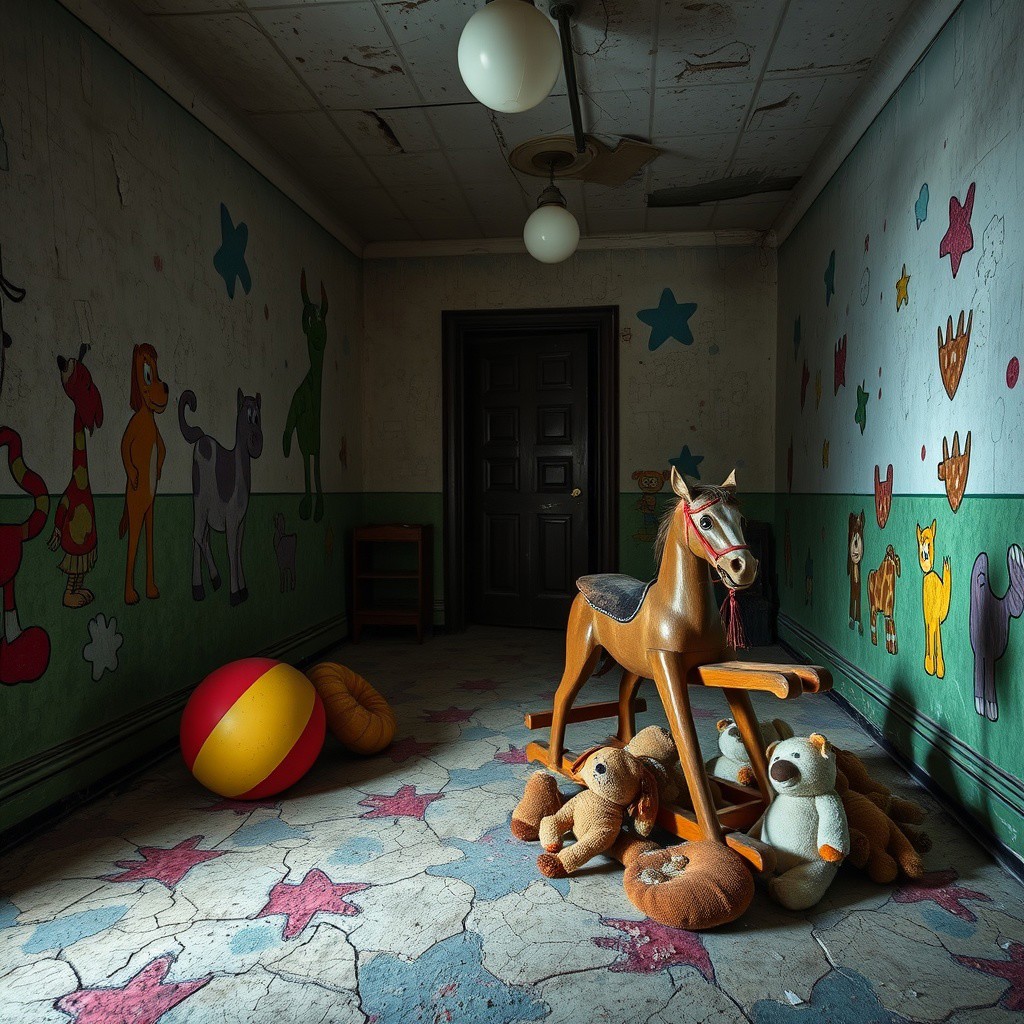An abandoned children's playroom, illuminated only by the dim, flickering light of broken overhead bulbs. The walls are painted with faded, peeling murals of cartoon animals and playful shapes, now warped and distorted with time. The floor is covered in old, cracked foam tiles, some pieces missing, leaving jagged gaps in the colorful pattern. A thick layer of dust settles on everything, but there is something unsettling about the emptiness—it feels like this room has been abandoned in a hurry, as if something left without a trace. The toys, once vibrant and inviting, are now neglected and broken. A deflated ball lies in one corner, partially hidden by a pile of decaying stuffed animals, their eyes sewn shut with thread that looks like it’s been torn out. A wooden rocking horse sits in the middle of the room, its paint chipped and peeling, the motionless frame casting long, strange shadows that distort across the walls. The silence is oppressive, heavy. Every creak of the building as it shifts under its own weight seems unnaturally loud in this dead space. The door to the room is slightly ajar, but beyond it, there is nothing but more empty corridors, endless and unreachable. No sound, no movement—only the stillness, and the deep unease that the room evokes
